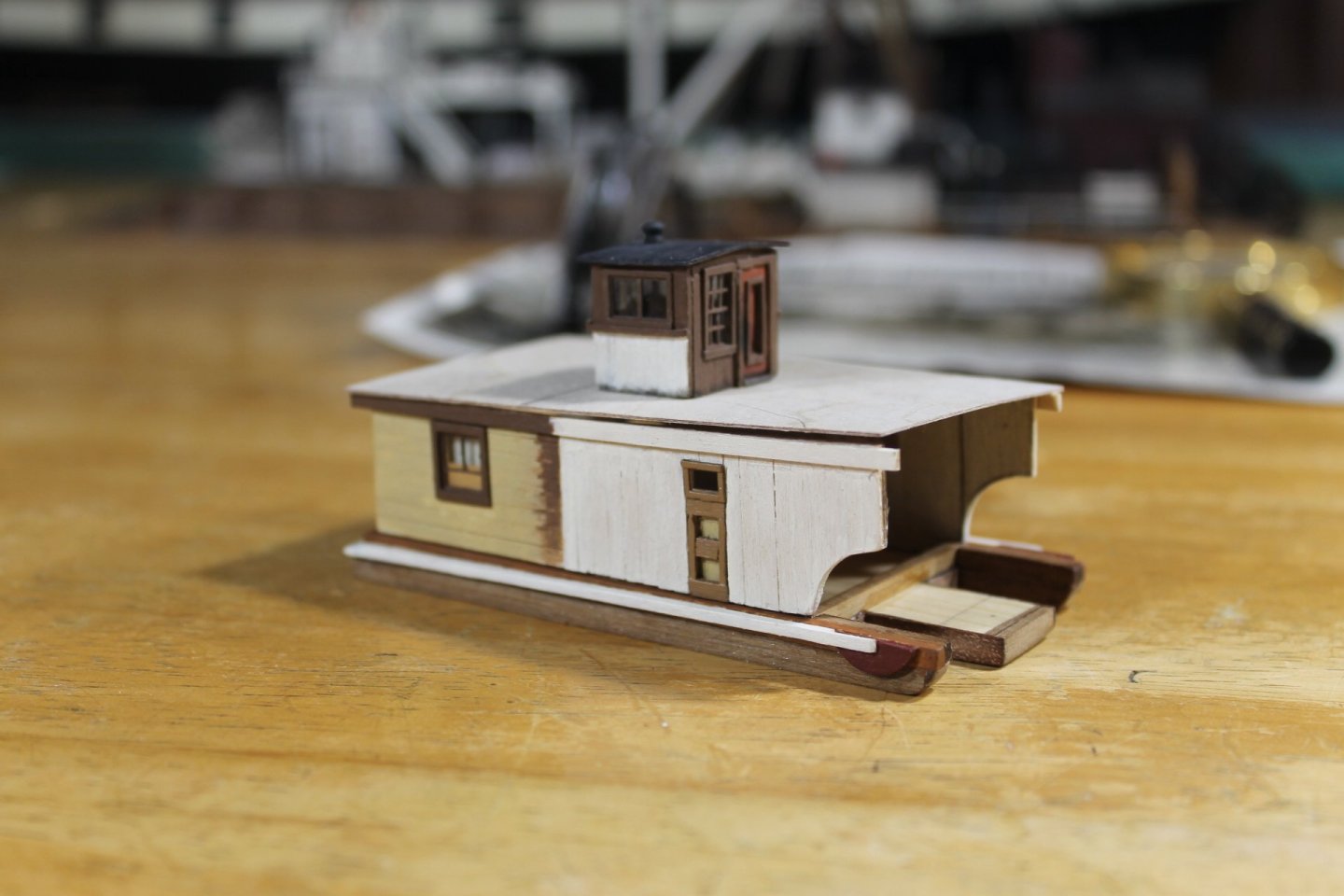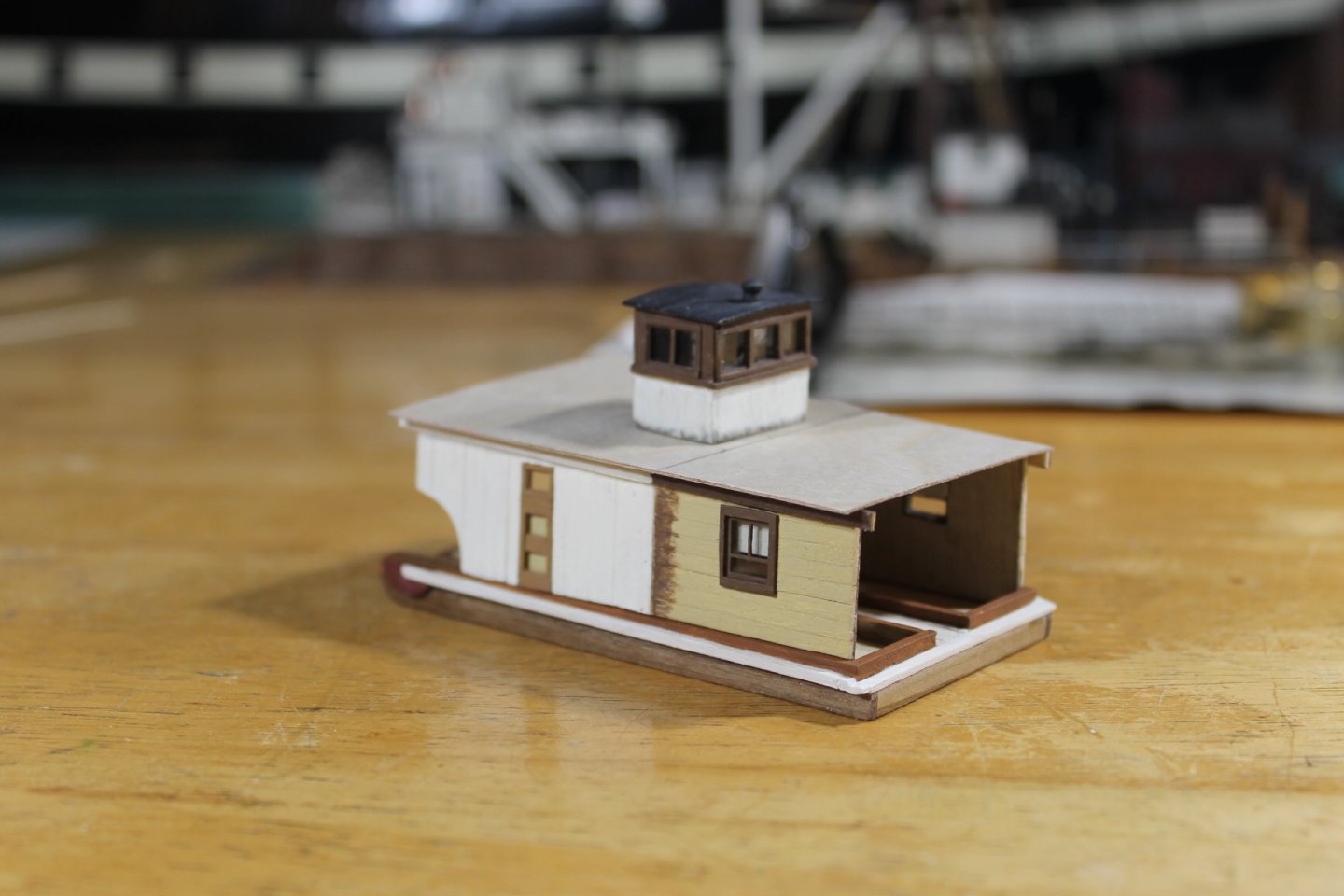-
Posts
6,586 -
Joined
-
Last visited
Content Type
Profiles
Forums
Gallery
Events
Everything posted by Keith Black
-
Thank you for the likes and for your kind comments. Both sides are finished. Nothing is glued in place as the ends need to be finished first. The boiler deck is loosely placed where the wheelhouse can be sat on top. The overall proportions seem/feel right so it's full steam ahead. The starboard side is tilted inward. Because Billy's starboard side is a mystery I treated both the same. Thank you for your support and for following along. Keith
-
Welcome to MSW. We lived in Egegik, Alaska for nine years. My wife is 50% Aleut and Egegik was where my wife's mother was born. Glad to have you aboard.
-
Very nice, James, the rigging is looking great. 👍
- 75 replies
-
Thank you to everyone for the comments and likes. The port side wall is built and painted. I bashed a six pane window to make the two over one window, added glazing and a shade per Billy's photo. I guessed at the colors the best I could by studying the press photo Weathering will do wonders but I'll wait till Billy is completed. Billy is going to be colorful. Thank you for your support and for following along. Keith
-
- 254 replies
-
- Victory Models
- Pegasus
-
(and 3 more)
Tagged with:
-

Hello and thank you for having me
Keith Black replied to Danny_CZ's topic in New member Introductions
Danny, welcome to MSW. Wishing you the best with your first project, glad to have you aboard. -
James, nice job and congratulations on getting those clove hitches tied but Bob, @Knocklouder has you beat by miles when it comes to tying clove hitches and he loves every minute of it. He's never happier than when it comes to tying clove hitches.
- 75 replies
-
*see Keith put the rice back in the cupboard
- 139 replies
-
- ancre
- Bateau de Lanveoc
-
(and 2 more)
Tagged with:
About us
Modelshipworld - Advancing Ship Modeling through Research
SSL Secured
Your security is important for us so this Website is SSL-Secured
NRG Mailing Address
Nautical Research Guild
237 South Lincoln Street
Westmont IL, 60559-1917
Model Ship World ® and the MSW logo are Registered Trademarks, and belong to the Nautical Research Guild (United States Patent and Trademark Office: No. 6,929,264 & No. 6,929,274, registered Dec. 20, 2022)
Helpful Links
About the NRG
If you enjoy building ship models that are historically accurate as well as beautiful, then The Nautical Research Guild (NRG) is just right for you.
The Guild is a non-profit educational organization whose mission is to “Advance Ship Modeling Through Research”. We provide support to our members in their efforts to raise the quality of their model ships.
The Nautical Research Guild has published our world-renowned quarterly magazine, The Nautical Research Journal, since 1955. The pages of the Journal are full of articles by accomplished ship modelers who show you how they create those exquisite details on their models, and by maritime historians who show you the correct details to build. The Journal is available in both print and digital editions. Go to the NRG web site (www.thenrg.org) to download a complimentary digital copy of the Journal. The NRG also publishes plan sets, books and compilations of back issues of the Journal and the former Ships in Scale and Model Ship Builder magazines.















